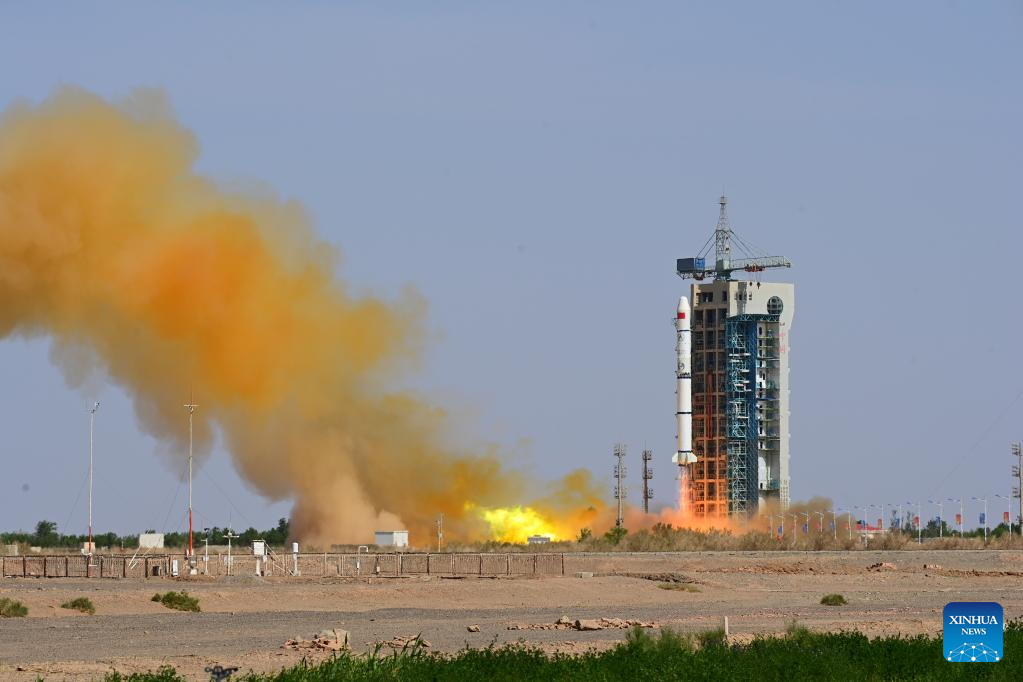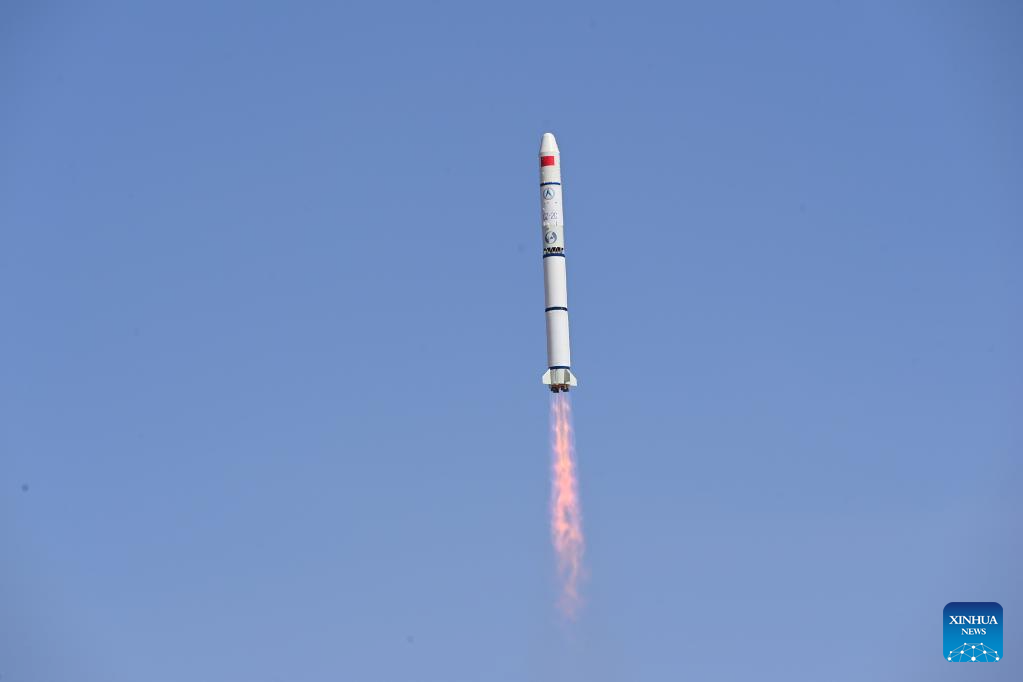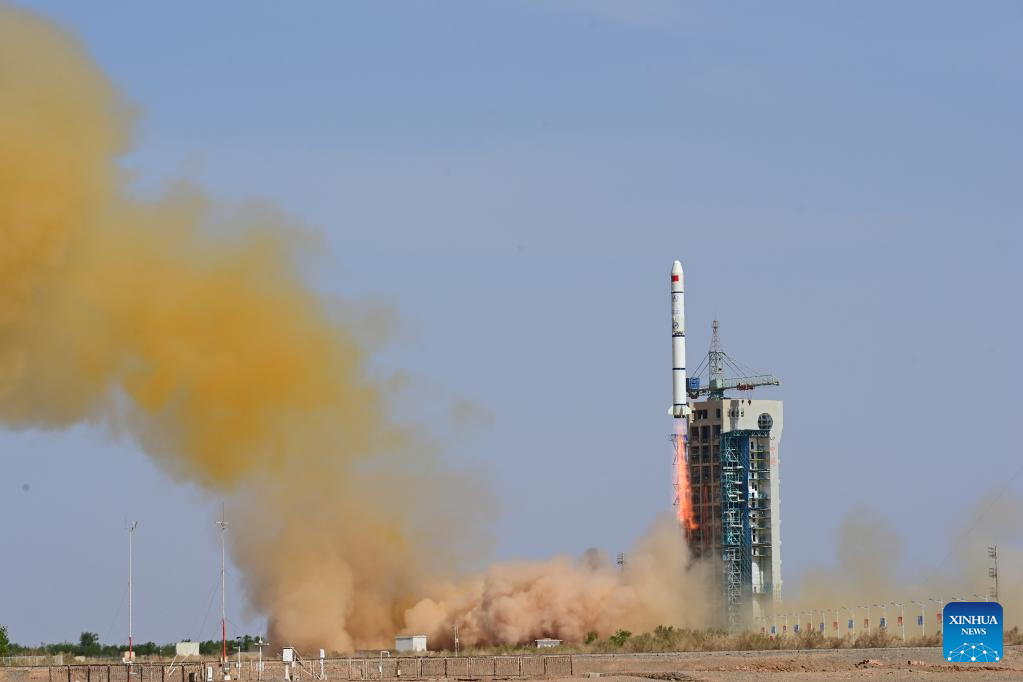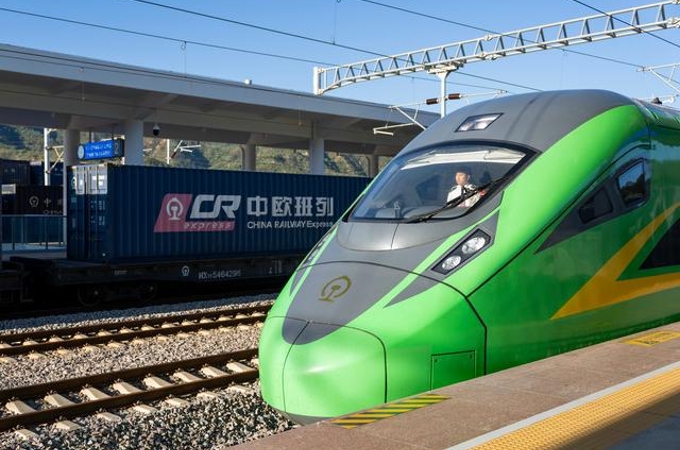China launches "Macao Science 1" space exploration satellites
Source: Xinhua | 2023-05-22 | Editor:Ines

A Long March-2C carrier rocket blasts off from the Jiuquan Satellite Launch Center in northwest China, May 21, 2023. China on Sunday successfully sent new space science satellites into orbit from the Jiuquan Satellite Launch Center in northwest China, including Macao's first space exploration satellite project Macao Science 1. Macao Science 1 is the first space science satellite program jointly developed by the Chinese mainland and Macao. (Photo by Wang Jiangbo/Xinhua)
China successfully sent two satellites of "Macao Science 1," a space exploration program, into space on Sunday.
The China National Space Administration (CNSA) said that the satellites were launched at 4:00 p.m. (Beijing Time) by a Long March-2C carrier rocket from the Jiuquan Satellite Launch Center in northwest China and entered the preset orbits successfully.
It was the 474th flight mission of the Long March carrier rocket series. The launch also sent a scientific experiment satellite named Luojia-2 into space.
Macao Science 1 takes a twin-satellite approach. Satellite A carries payloads like high-precision magnetometers to detect Earth's magnetic field. Satellite B is equipped with payloads like high-energy particle detectors and solar X-ray instruments to obtain space environment data.
Macao Science 1 has the capability to complement the observations made by Europe's Swarm satellites and China's first seismo-electromagnetic satellite, Zhangheng 1. This collaborative effort allows for a more comprehensive understanding of Earth's low latitude magnetic field and space environment changes as well as facilitates the monitoring of the South Atlantic Anomaly (SAA).
According to the CNSA, Macao Science 1 is the first space science satellite program jointly developed by the Chinese mainland and Macao. The project is also the first scientific exploration satellite placed in a near-equatorial orbit to monitor the geomagnetic field and the space environment of the near-equator SAA.
The SAA is a giant region of lower magnetic intensity in the skies above the planet, stretching over the South Atlantic. The weakening of the Earth's magnetic field protection over this area allows more radiation from outer space to penetrate and get closer to the Earth's surface, which easily interferes with the communication of satellites, aircraft and spacecraft passing through this area. Scientists believe the study of the SAA can help them find the reason for Earth's weakening magnetic field.
Macao Science 1 has the highest accuracy of geomagnetic field detection in China and will significantly improve the country's space magnetic survey, said the CNSA.

A Long March-2C carrier rocket blasts off from the Jiuquan Satellite Launch Center in northwest China, May 21, 2023. China on Sunday successfully sent new space science satellites into orbit from the Jiuquan Satellite Launch Center in northwest China, including Macao's first space exploration satellite project Macao Science 1. Macao Science 1 is the first space science satellite program jointly developed by the Chinese mainland and Macao. (Photo by Wang Jiangbo/Xinhua)

A Long March-2C carrier rocket blasts off from the Jiuquan Satellite Launch Center in northwest China, May 21, 2023. China on Sunday successfully sent new space science satellites into orbit from the Jiuquan Satellite Launch Center in northwest China, including Macao's first space exploration satellite project Macao Science 1. Macao Science 1 is the first space science satellite program jointly developed by the Chinese mainland and Macao. (Photo by Wang Jiangbo/Xinhua)

A Long March-2C carrier rocket blasts off from the Jiuquan Satellite Launch Center in northwest China, May 21, 2023. China on Sunday successfully sent new space science satellites into orbit from the Jiuquan Satellite Launch Center in northwest China, including Macao's first space exploration satellite project Macao Science 1. Macao Science 1 is the first space science satellite program jointly developed by the Chinese mainland and Macao. (Photo by Wang Jiangbo/Xinhua)

A Long March-2C carrier rocket blasts off from the Jiuquan Satellite Launch Center in northwest China, May 21, 2023. China on Sunday successfully sent new space science satellites into orbit from the Jiuquan Satellite Launch Center in northwest China, including Macao's first space exploration satellite project Macao Science 1. Macao Science 1 is the first space science satellite program jointly developed by the Chinese mainland and Macao. (Photo by Wang Jiangbo/Xinhua)
You May Like
-
China launches new experiment satellite
China on Wednesday evening successfully sent a new experiment satellite into space from the Jiuquan Satellite Launch Center in northwest China.
InKunming 2023-03-16 -
China launches new communications satellite
China on Thursday sent a new communications satellite into orbit from the Xichang Satellite Launch Center in southwest China's Sichuan Province.
InKunming 2023-02-24 -
China launches Yaogan 34 remote sensing satellite
China successfully sent a new remote sensing satellite of the Yaogan 34 series into space from the Jiuquan Satellite Launch Center in Northwest China at 9:38 am...
InKunming 2022-11-15 -
GLOBALink | China-aided project helps 100,000 people in rura...
completed the installation of the satellite television project in 900 Ugandan villages that face connectivity challenges. More than 100
InKunming 2022-10-18 -
China launches Zhongxing-1E satellite
China successfully sent a new satellite into space from the Wenchang Spacecraft Launch Site in the southern island province of Hainan on Tuesday.
InKunming 2022-09-14 -
China launches 16 new satellites
China on Wednesday sent 16 new satellites into space from the Taiyuan Satellite Launch Center in the northern province of Shanxi.
InKunming 2022-08-11 -
China launches new Earth observation satellite
China sent a new Earth observation satellite into space from the Jiuquan Satellite Launch Center on Monday.
InKunming 2022-06-28 -
China launches new satellite for Earth observation
China launched a new Earth observation satellite from the Jiuquan Satellite Launch Center in northwest China on Thursday.
InKunming 2022-04-07 -
China launches rocket to deploy Earth-observation satellite
China launches a Long March 4C rocket at the Jiuquan Satellite Launch Center in Northwestern China's Gobi Desert to deploy an Earth-observation radar satellite ...
InKunming 2022-02-28 -
China launches new resource satellite
China sent a new resource satellite into planned orbit from the Taiyuan Satellite Launch Center in north China's Shanxi Province on Sunday.
InKunming 2021-12-27







